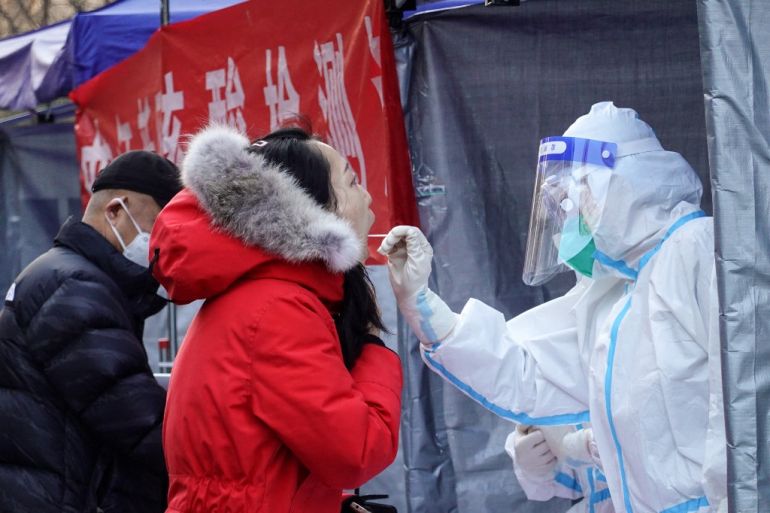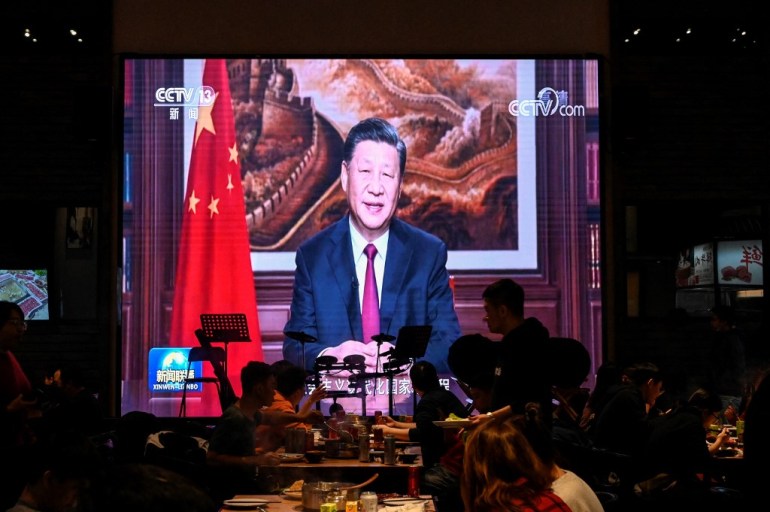China welcomes 2022 with worst COVID week since taming virus
Surge has been driven mostly by an outbreak in the northwestern industrial and tech hub of Xi’an.

China has started 2022 with its biggest tally of local coronavirus cases for any seven-day period since subduing the country’s first epidemic nearly two years ago, despite an arsenal of some of the world’s toughest COVID-19 measures.
The National Health Commission reported on Saturday 175 new community infections with confirmed clinical symptoms for December 31, bringing the total number of local symptomatic cases in mainland China in the past week to 1,151.
Keep reading
list of 3 itemsChina’s Xi’an imposes ‘strictest’ controls to halt COVID outbreak
Year ahead: China’s economic shift may yield winners and losers
The surge has been driven mostly by an outbreak in the northwestern industrial and tech hub of Xi’an, a city of 13 million.
The deepening outbreak in Xi’an will likely firm authorities’ resolve to curb transmissions quickly as and when cases emerge.
The city, under lockdown for 10 days as of Saturday, has reported 1,451 local symptomatic cases since December 9, the highest tally for any Chinese city in 2021.
The state-backed publication, China Daily, said that the capital of Shaanxi province, “is still facing a tough battle” against the outbreak, and that there is no “turning point” yet in containing the spread of the virus.
Liu Guozhong, secretary of the Shaanxi Provincial Committee of the Communist Party of China, said there should be a “sense of urgency in the fight against COVID-19 in the days to come”.
“Xi’an is the decisive destination in the fight against the pandemic and only when the outbreak in Xi’an has been put under control can we fundamentally reverse the passive situation in the entire province,” Liu was quoted by China Daily as saying.
Upcoming Winter Olympics
While China’s case count is tiny compared with many outbreaks elsewhere in the world, forestalling major flare-ups in 2022 will be important.
Beijing will be hosting the Winter Olympic Games in February, and the ruling Communist Party will hold a once every five years congress, expected in the autumn, where President Xi Jinping will likely secure a third term as party secretary.
In his new year address, Xi said China “will spare no efforts to present a great games to the world”.
The emergence of the highly transmissible Omicron variant will also drive Beijing to stick to its high vigilance against the virus. China has reported a handful of imported Omicron cases and at least one locally transmitted case.
Since August, China has tried to get outbreaks under control within about two weeks, much shorter than the four to six weeks in earlier battles against sporadic flare-ups following the initial nationwide epidemic, according to the National Health Commission.

Cities along China’s borders are at higher virus risk, either due to the presence of overland transport links or entry of infected travellers from other countries. Some were hit by Delta outbreaks that resulted in harsh travel curbs last year.
Yunnan, which shares a border with Myanmar, Laos and Vietnam, reported new local symptomatic cases on 92 out of 365 days last year, or 25 percent of the time, more often than any other province, autonomous region or municipality.
The Xi’an outbreak, which led to cases in other cities including Beijing, could be traced back to a flight arriving from Pakistan, but it was unclear how it spread to local communities.
Many people have been forbidden from leaving their residential compounds, but a city government official said on Friday curbs would be loosened in less risky compounds when the time was right.
China’s tough epidemic policies have helped stop its sprawling industrial sector from sliding into prolonged shutdowns, reaping important export gains as other pillars of growth weakened.
But unpredictable disruptions have shaken consumer sentiment and hammered the catering, hospitality and tourism sectors.